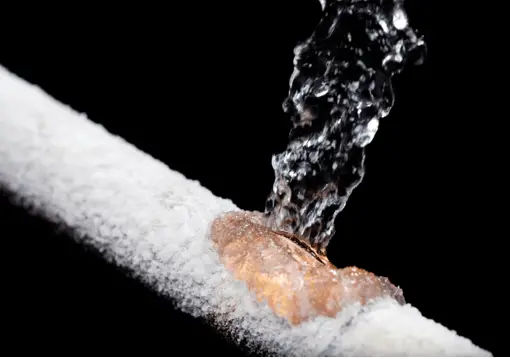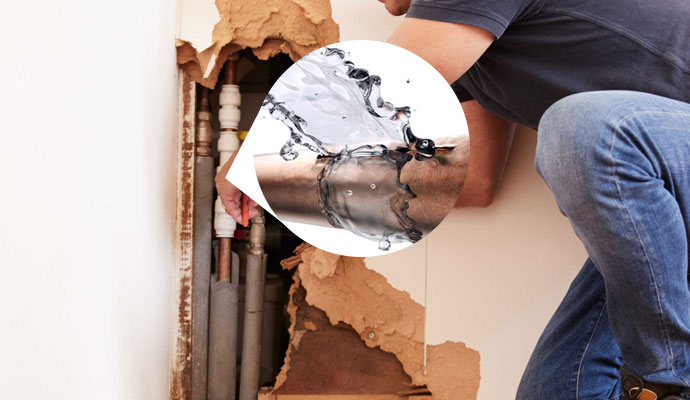We've stumbled on the article on The Do’s And Don’ts After Water Damage down the page on the internet and believe it made sense to discuss it with you here.

What should you do if a water pipe bursts in your residence? Do you desire a mini-waterfall and also flooding in a location of your residence? If you find yourself in this circumstance, you need to act quick. The longer you wait, the extra extreme the damages that can happen to your residential property. The presence of mind is key in these events. For these factors, you require to discover exactly how to act in the event of a ruptured water pipe. Since time is of the significance, examine out the complying with suggestions below to assist you act quick.
Shut Off the Key Waterline Valve
The first thing to do? Close the shut-off shutoff. Search for the neighborhood shut-off shutoff to turn off the water in one details area only. Go for the main water line shutoff and also turn it off if you don't understand where the localized shut-off shutoff is. This action will remove the water promptly in your whole residence. Typically, the major valve is found outside the house next to the water meter. If it's not there, you can also discover it in two locations: in the basement at eye degree or the 1st flooring on the ground. Generally, builders put the shut-off shutoff in the main ground level washroom or best alongside it.
Call Water Damages Remediation Pros for Aid
After shutting the water resource, call the specialists for help. Since the pipelines needed to be fixed as well as there is a demand to address the other problems to your building, this situation is not something you can do some DIY. Look for aid from a reputable company providing 24/7 emergency services if you can not cope. With their professional assistance, you can protect against much larger water damage consisting of warped walls, loose ceramic tiles, or damaged frameworks. Don't take this issue lightly as well as look for professional assistance for your complete assurance as well as a credible solution.
Paper the Damages For Insurance policy
While you're waiting for the pros to show up, obtain some documents of the damages created by the wayward pipeline. Do close-up shots of the harmed belongings as well as areas.
Restore Things That Can Be Conserved
As soon as you're done taking images, take a look at the damaged things as well as obtain the most crucial ones from the stack. Dry them off in a dry/warm place far from the damaged area and also attempt to protect them as long as you can. Drag as much moisture as you can to the product so it can start to dry out.
Start the Drying Refine
Luckily, the water from your waterlines is already tidy so you don't have to stress about sewage system water. The streaming water might have disrupted the dust as well as debris in your floorboards as well as carpets. Blot out as much water as you can from the surface areas with old towels.
Professionals are the only individuals qualified to examine correctly and take care of the burs pipes as well as subsequent damage. As constantly, pipes do not just unexpectedly burst out of heaven. They typically offer silent warnings like gurgling paint, water spots. Unusual noises in the plumbing, caving ceiling, mildewy odor, or peeling wallpaper. Take note of these indications and also do some preventive measures so you can nip any kind of issues in the bud.
What should you do if a water pipeline ruptureds in your house? For these reasons, you need to discover just how to act in the event of a burst water pipeline. After closing the water resource, call the professionals for assistance. With their specialist help, you can avoid much bigger water damages including warped baseboards, loosened floor tiles, or damaged frameworks. Thankfully, the water from your waterlines is already clean so you do not have to stress concerning sewer water.
BROKEN WATER PIPES: COST TO REPLACE & WAYS TO FIX A PIPE
CAUSES OF A BROKEN WATER PIPE
A water pipe can break for several reasons depending on the environment you live in, type of pipe, and circumstances.
The most common cause of broken pipes is freezing. If you live in a colder climate, this could happen. When water freezes it increases in volume by 9% and the pressure in the pipes can go from 40 psi to 40,000 psi. Clearly, this could be detrimental to the pipes. Water freezing causes quick expansion, which puts stress on the pipes and could lead them to crack or weaken. When water thaws, it will leak out the cracks. Other changes in water pressure can also cause breakage. Another common cause of broken water pipes is age.
Depending on the material, water pipes can last anywhere from 70-100 years. But the older they get, the more susceptible they are to weakening and corroding. Older pipes coming into contact with another material could speed up the corrosion process as well. PVC pipes can become brittle with age, while copper is prone to corrosion and stress over time. Something that could also potentially break water pipes is when they move. They may move from construction or the house settling. Moving can stress the fixed pipe which may lead to a leak or burst pipe.
HOW MUCH WATER COULD LEAK INTO YOUR HOUSE FROM A BROKEN PIPE?
The amount of water that leaks depend on how big the break in a pipe is. If it is just a minor crack, water will slowly leak out. This isn’t as serious as a full broken pipe, but it can still cause significant damage to your home. Burst pipes can leak up to 10 gallons of water per minute. The amount of water leaked also depends on what appliance is involved. The water line to your refrigerator can leak ½ to 1 gallon per minute depending on water pressure. One toilet supply line may leak 2-3 gallons a minute and a washing machine hose will leak up to 10-12 gallons per minute.
TURN THE WATER OFF
Doing this first is imperative; everything else can wait. You need to deactivate the water supply to stop the flow of water and prevent more water from leaking into your home. Shutting off the water could potentially save you thousands in water damage repairs. Locating the water shutoff valve depends on the climate you live in. For colder climates, the valves are usually inside, such as in the basement. For houses in milder weather, the shutoff valves will probably be outside—either attached to an exterior wall or in an underground box with a removable lid.
OPEN A FAUCET
The next thing to do is to open a faucet or turn on a sink. This will relieve any remaining water pressure in the pipes and ensure a full-shut down.
GET RID OF THE WATER
The quicker you get rid of the water, the less water damage and mold there could be. Use a mop and a shop vacuum to help get clean up the water. Use towels to dry everything the best you can.
CUT AND REMOVE THE DAMAGED PIPE
Once you have shut off the water and drained the damaged water pipe, you can begin to fix the issue. Cut out the damaged section of the pipe with a pipe cutter, ensuring that you also cut one inch extra on each side of the damage. Once you get rid of the broken part of the pipe, you may begin repairs.
https://www.wmhendersoninc.com/blog/broken-water-pipes-cost-to-replace-ways-to-fix-a-pipe/

I was shown that report on The Do’s And Don’ts After Water Damage from a good friend on our other site. Do you know another person who is inquisitive about the subject? Take a moment to promote it. We take joy in reading our article about The Do’s And Don’ts When Water Floods Your Home.